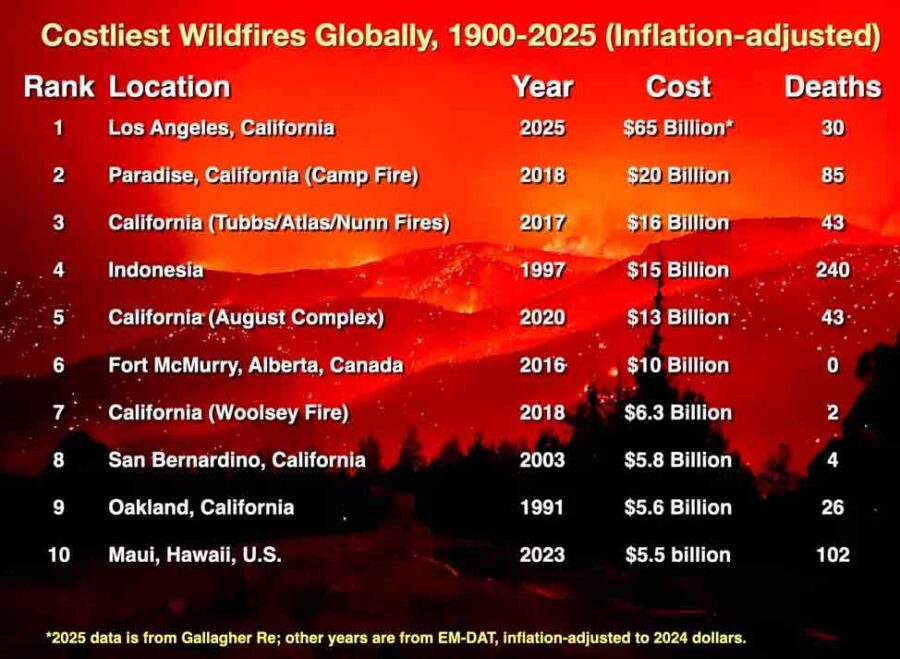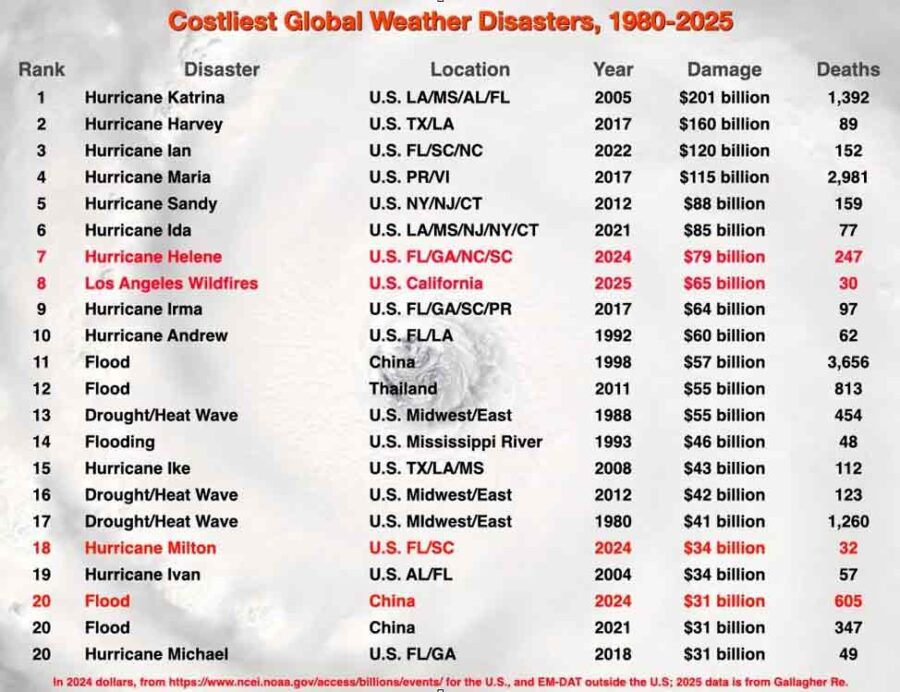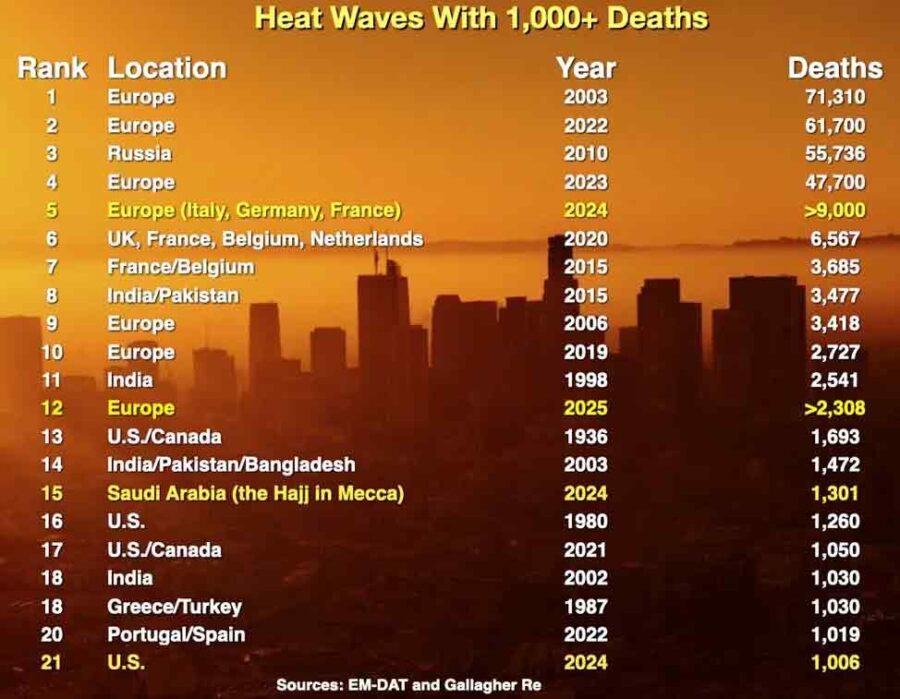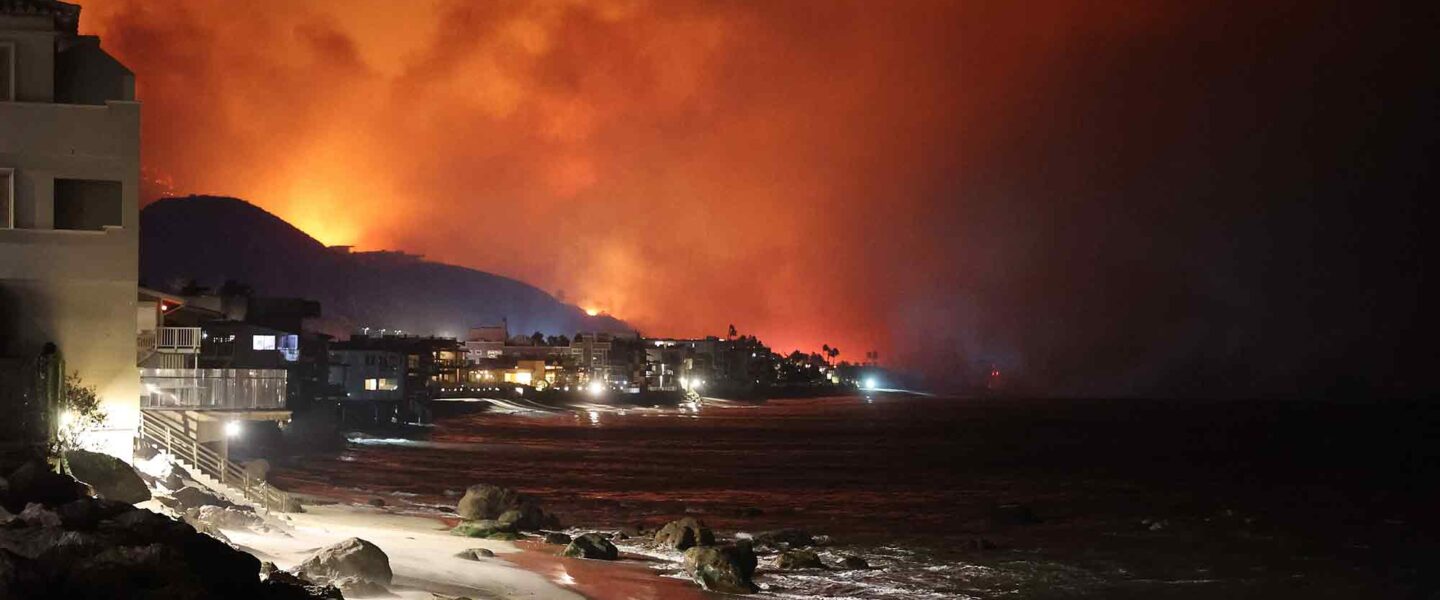Four of the top 20 costliest weather disasters have occurred in the last year.
|
Listen To This Story
|
The US suffered 15 billion-dollar weather disasters during the first half of 2025, said insurance broker Gallagher Re in its latest quarterly report issued July 16. The average number of January-June inflation-adjusted billion-dollar disasters over the previous 10 years in the US was 15; the record was 23, set in 2024. The Gallagher Re quarterly reports help fill a void left by the elimination of NOAA’s program to track billion-dollar weather disasters, which was terminated this year.
Globally, only four billion-dollar weather disasters occurred outside of the US during the January-June period, giving a total of 19 billion-dollar weather disasters for the planet. The damage wrought by these was $134 billion, with an unusually high 60 percent of the total being insured damages. The US was responsible for 92 percent of these insured damages, primarily because of the Los Angeles wildfires of January. Insured inflation-adjusted losses globally from weather-related disasters in 2025 were the highest on record for the first half of a year: $81 billion. The previous record was $75 billion, set in 2024. Gallagher Re’s historical database extends back to 1990.
During the past 10 years, the average annual insured loss has broken down by quarter as follows: Q1 (15 percent), Q2 (25 percent), Q3 (44 percent), Q4 (16 percent). There is typically higher loss potential in Q3, the peak period for Northern Hemisphere hurricanes and typhoons.

Photo credit:
Yale Climate Connections
The LA Wildfires: 8th-Costliest Weather Disaster in World History
In January, the two most expensive wildfires in world history swept through the Los Angeles area. According to Gallagher Re, the total economic damages of the Palisades Fire were $37 billion, and the Eaton Fire, $28 billion. The previous most expensive single fire globally (adjusted for inflation) was the Camp Fire of 2018 in Paradise, CA, at $20 billion (Fig. 1). The combined $65 billion cost of the 2025 California wildfires makes this event the eighth-costliest weather disaster in world history (Fig. 2).

Photo credit:
Yale Climate Connections
12 Billion-Dollar US Severe Weather Disasters in 2025
The US suffered 12 billion-dollar severe weather disasters (tornadoes, hail, wind, and flash flooding from severe thunderstorms) during January-June 2025; two others cost over $900 million, and will likely end up being billion-dollar disasters once final tallies are available. The third most expensive weather disaster globally of 2025 was a March 13-16 severe weather outbreak in the US that cost $9.5 billion. While not record-setting, the year-to-date economic losses from severe thunderstorms in the US in 2025 are the fourth-costliest on record, behind only 2024 ($62 billion), 2023 ($61 billion), and 2011 ($50 billion).
The US has also suffered over $1 billion in drought costs so far in 2025, Gallagher Re said.
exceptional work to not only link Europe's extreme heat to climate change, but to connect this to the *lives lost* *triple* the deaths, because of our fossil fuel habit.www.theguardian.com/environment/…
— Dr Adam Levy (@climateadam.bsky.social) 2025-07-09T13:49:58.365Z
Deadliest Disaster of 2025: Over 2,305 Deaths in European Heat Wave
An early-summer heat wave June 23-July 2 is being blamed for 2,305 deaths in 12 European cities with a population of 30 million, according to a study by scientists at the UK’s Grantham Institute. Since the total population of Europe is about 25 times higher (745 million), the total death toll will be much higher. About 65 percent of the deaths were a result of human-caused climate change increasing the heat by 1-4 degrees Celsius (1.8-7.2 degrees Fahrenheit) — a tripling of the toll — the researchers said. This heatwave already ranks as the 12th-deadliest heatwave in world history, according to statistics for 1900-2023 from EM-DAT and Gallagher Re (Gallagher Re said there were a total of 2,308 European heatwave deaths in 2025, Fig. 3). Note that methods for assessing heat mortality have evolved over time — such as with the increased recognition of heat’s role in contributing to cardiovascular and respiratory deaths — so the death tolls from some long-ago heat waves might be higher if calculated by modern standards.

Yale Climate Connections
This story by Jeff Masters, with contributions from Bob Henson, was originally published by Yale Climate Connections and is part of Covering Climate Now, a global journalism collaboration strengthening coverage of the climate story. WhoWhatWhy has been a partner in Covering Climate Now since its inception in 2019.





